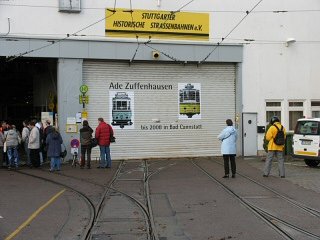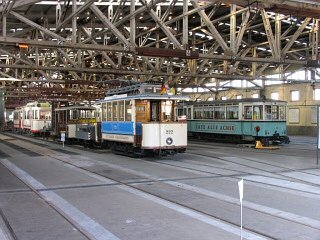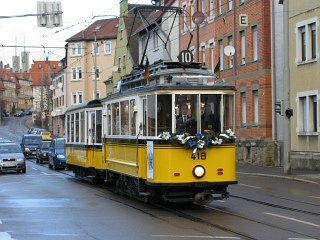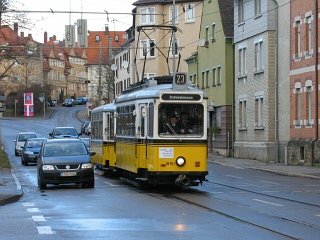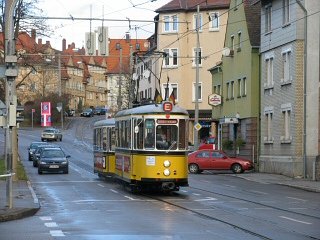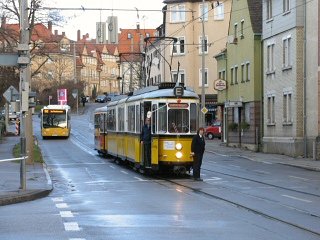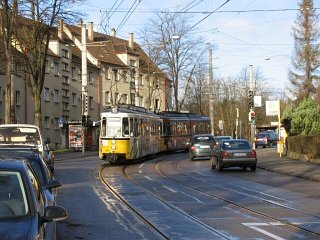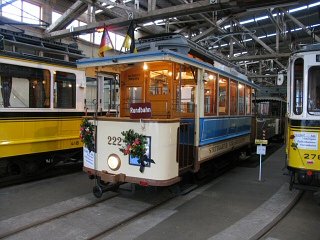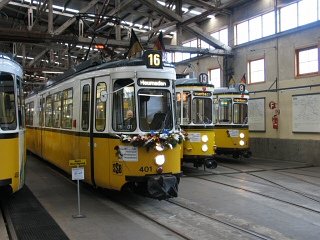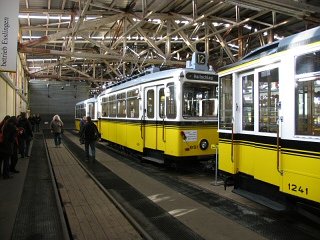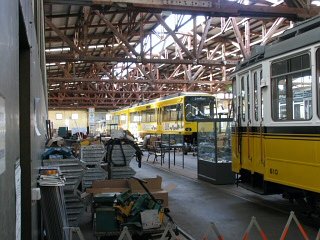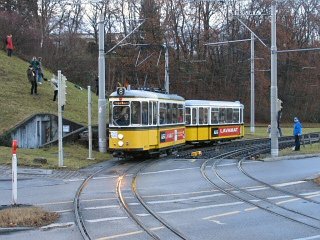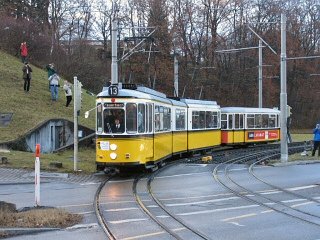budapest
other hungarian
close-up
lost rails
other countries
December 2007
The collection of the SHS (Stuttgart Historic Trams) is not confined to vehicles of the traditional tram operator SSB AG, but also of the Filderbahn company, the Esslingen-Nellingen-Denkendorf interurban, and the municipal tramways of Feuerbach und Esslingen. Plus they also have a few buses.
To the left: number 418 (built in 1925) was the first type painted in this striking yellow-white livery with back stripes. The trailer was built in 1953 for the small tramway in Reutlingen, which usually bought the same types - or at least very similar ones - as Stuttgart. To the right: number 851, built in 1939 for the "Imperial Garden Exhibition".
To the left: the type T2 was built between 1953 and 57. The series of "two rooms and a bath" articulated DoT4 trams - of which we see one to the right - were built out of T2s during 1964-66.
To the left: number 276 from 1952, with a wooden-frame car body, built by old plans from 1926. To the right: GT4 double-set masquarading as tram 15 - one day after tram line 15 was closed.
The museum was connected to the tracks of route 15 with just one pair o' rails, so trams had to reverse to get inside. Here we see the T2 going backwards with its B2 trailer.
The museum has already started bundling up, but here are a few shots of what was still there to see inside the depot hall. To the left: the oldest operable tram in the collection - number 222, built by Herbrandt in 1904. To the right: a GT4, a DoT4 and a T2 - all with route number/destination blinds of tram lines previously operating around here.
To the left: some of the guests from Bad Cannstatt under the interesting wooden roof of the hall, built in 1936. To the right: far in the back I spotted two halves of the three prototype DT8 Stadtbahn twin-sets: number 3001 (DT8.1, MAN/AEG in 1981) and number 3006 (DT8.3, MAN/BBC in 1982). It was interesting to see normal-gauge vehicles in this meter-gauge facility!
The return of the guest trams to Bad Cannstatt was a bit disappointing: they came quite late, when the lights were already pale. On the pictures: the T2+B2 set, and the DoT4 towing a trailer. Note the dual gauge: this is a part of the normal-gauge network, where meter-guage was retained.
Of course it was nice to see these old trams "out in the wild" even so. Hopefully I'll have a chance to visit the collection at its new place, too!
Sources:
german Wikipedia pages,
www.shb-ev.info,
www.stadt-bahn-bus.de,
Gottfried Bauer: Strassenbahnen in Stuttgart, GeraMond 2003
Back to the top Back to the main page
